The Art of Functionality: Designing and Utilizing a Two-Tier Iron Tray
In an era where minimalism meets craftsmanship, the two-tier iron Tray emerges as a versatile hero in home organization and aesthetic storytelling. Combining industrial robustness with sculptural elegance, this unassuming yet transformative piece bridges the gap between utility and artistry. From minimalist kitchens to eclectic living rooms, its design philosophy and multifunctional applications redefine how we interact with everyday objects.
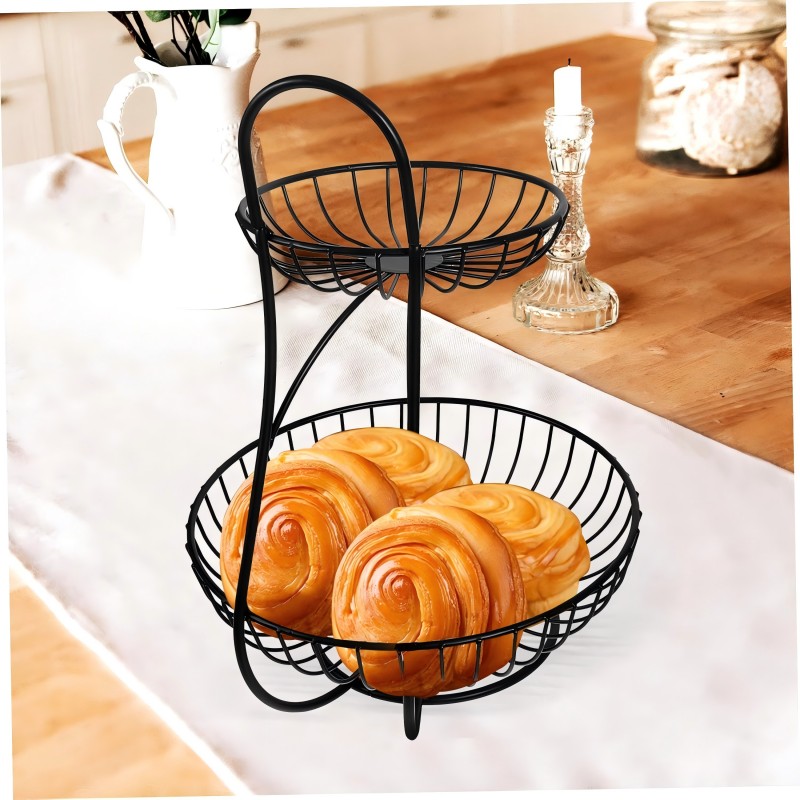
I. Design Philosophy: Where Form Meets Rigor
1. Material Alchemy
The choice of iron as a primary material is no accident. Cold-rolled steel, treated with anti-corrosion powder coatings, forms the backbone of premium trays. Unlike mass-produced plastic or fragile ceramics, iron offers:
Structural Integrity: Capable of holding up to 15kg per tier without deformation.
Surface Versatility: Matte, hammered, or oxidized finishes cater to rustic, industrial, or modern aesthetics.
Designers like Studio Kettal employ laser-cut geometric patterns (hexagons, quatrefoils) on tray surfaces, transforming shadows into dynamic wall art when sunlight filters through.
2. Ergonomic Architecture
A well-engineered two-tier tray balances verticality and accessibility:
Tier Spacing: 15–30cm clearance allows tall items (wine bottles, vases) on the lower deck.
Non-Slip Edges: 2cm raised borders prevent items from sliding, critical for outdoor use.
Modularity: Some models feature detachable tiers that function as standalone serving boards.
The "Nest & Stack" system by German designer Tobias Juretzek exemplifies this, using interlocking joints for secure assembly without screws.
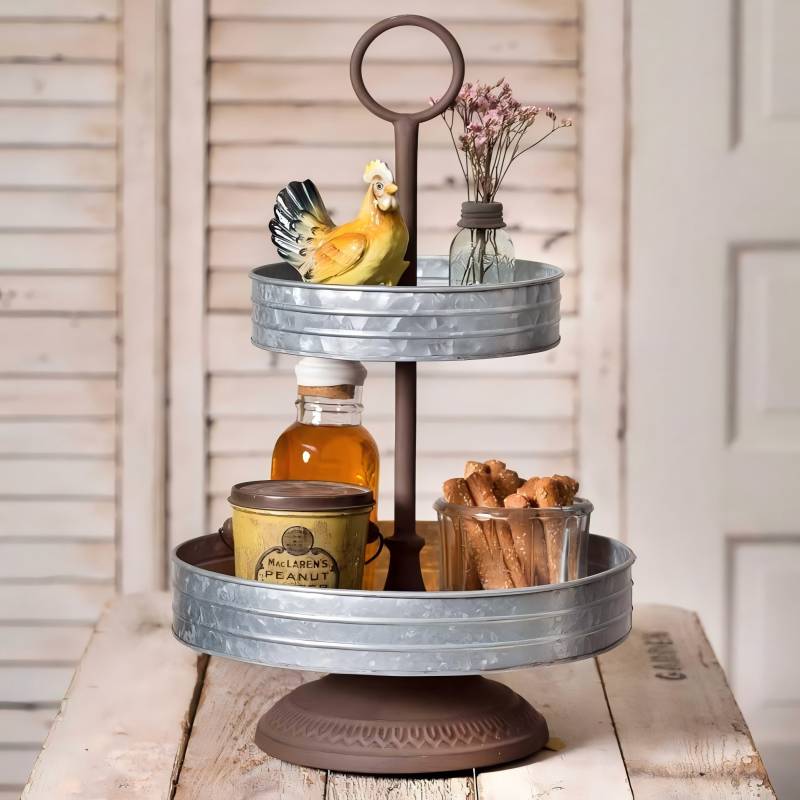
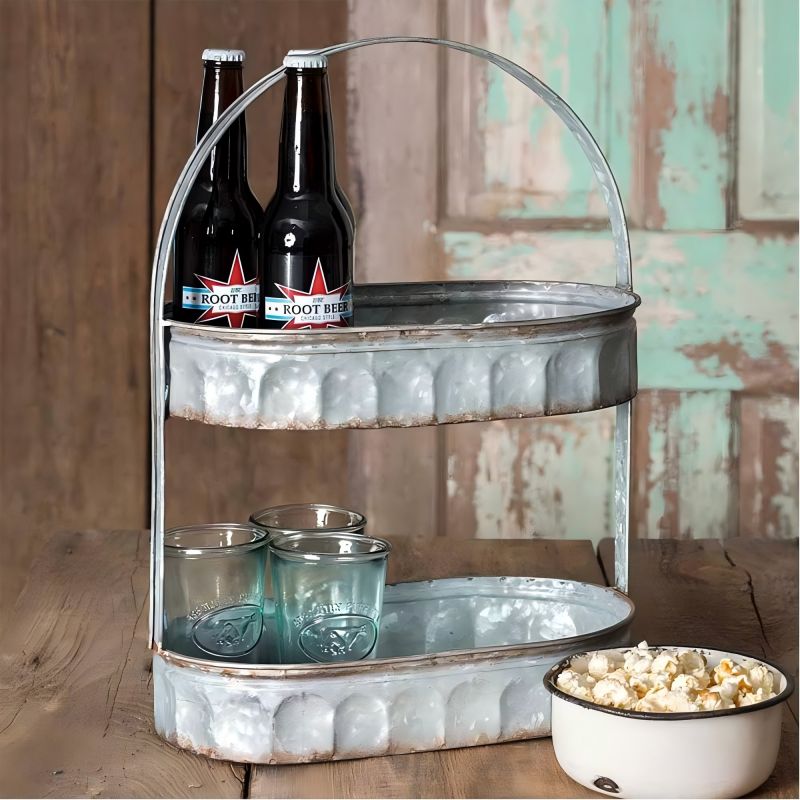
II. Functional Mastery: Beyond Basic Organization
1. Culinary Stagecraft
In kitchens, iron trays perform triple duty:
Prep Station: Lower tier holds chopped ingredients; upper tier organizes spices and tools.
Serveware: Rustic charcuterie boards on the top, wine glasses below for dinner parties.
Herb Drying Rack: Perforated trays allow air circulation for drying herbs or citrus slices.
Pro Tip: Line the lower tier with cork sheets to dampen noise from metal utensils.
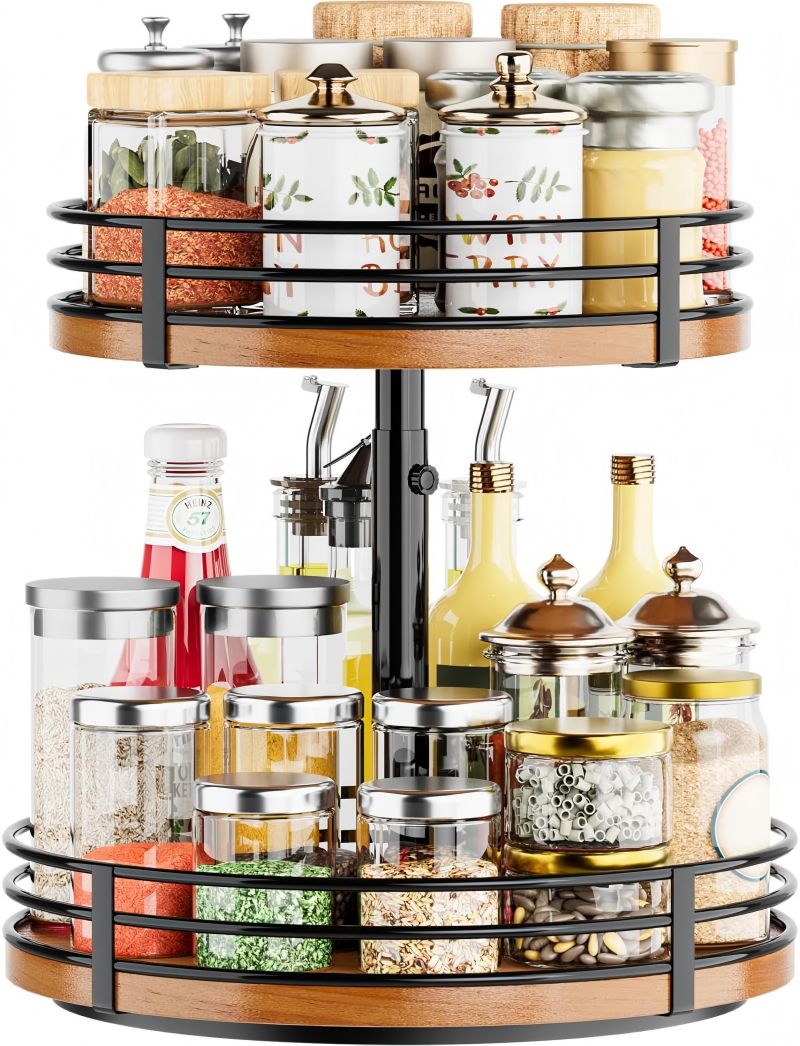
2. Living Space Choreography
Entryway Command Center: Upper deck for keys/wallets; lower level stores sunglasses or mail.
Plant Parenthood: Suspend trailing plants (pothos, string-of-pearls) from the upper tier; place succulents below.
Workspace Savior: Architects use trays to separate blueprints (top) from modeling tools (bottom).
3. Commercial Adaptations
Retail Merchandising: Boutiques display jewelry on velvet-lined upper tiers, with product tags stored below.
Hospitality Hack: Cafés use two-tier trays for “high tea” service—scones above, clotted cream and jam within easy reach.
III. Maintenance & Customization
1. Care Rituals
Rust Prevention: Monthly waxing with beeswax paste (1:1 ratio of wax and mineral oil).
Stain Removal: Baking soda paste scrubs off food stains; avoid abrasive pads.
Seasonal Storage: Coat with silicone spray before storing in humid environments.
2. Personalization Pathways
Magnetic Upgrades: Adhesive magnetic sheets on the underside turn trays into tool holders.
Color Play: Food-safe spray paints (e.g., Pantone 448C “The Ugliest Color”) refresh aesthetics.
Hybrid Materiality: Insert marble or walnut slabs into cutout frames for mixed-media drama.
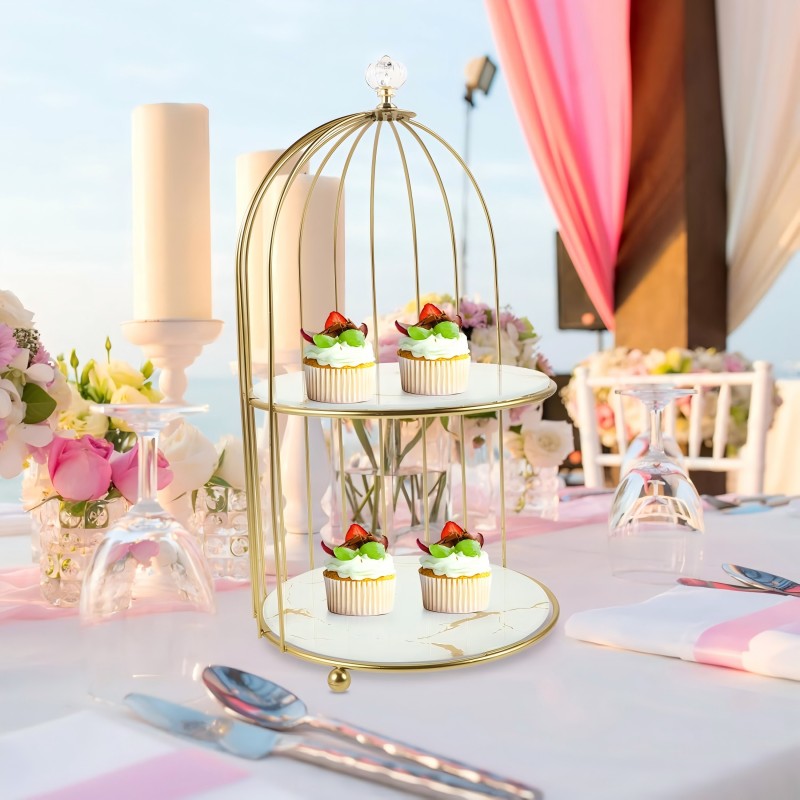
IV. Sustainability Edge
Iron trays champion circular design:
Longevity: A 3mm-thick tray lasts 20+ years vs. plastic’s 2-year lifespan.
Recyclability: 98% of steel can be repurposed without quality loss.
V. Cultural Resonance & Market Trends
1. Historical Echoes
The two-tier design traces back to Victorian-era “butler’s trays,” which evolved from walnut-veneered portable desks to today’s industrial iterations. Modern versions nod to this heritage with brass rivet detailing.
2. Global Aesthetic Shifts
Japandi Influence: Blackened iron trays with asymmetric tiers dominate Pinterest boards.
Tropical Modernism: Brazilian studios weld trays into palm-frond shapes for resort hotels.
Conclusion: The Silent Revolution
The two-tier iron tray is more than Storage—it’s a spatial poet. It whispers order into chaos, turns mundane tasks into rituals, and ages with dignified patina. As homes shrink and sustainability priorities grow, this humble hero stands ready, tier by tier, to elevate our daily lives. In the words of designer Ilse Crawford: “Good design isn’t about objects; it’s about the life that happens around them.” The iron tray, in its quiet strength, embodies this truth—one layered moment at a time.
